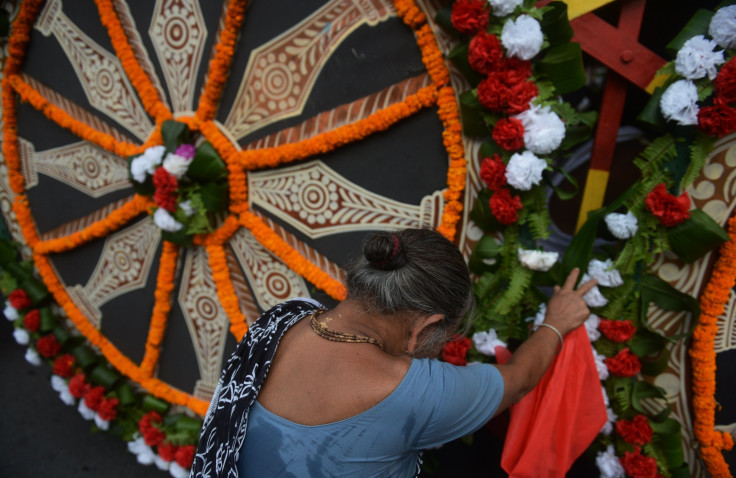Rath Yatra Hindu Festival Event Marred By Death Of Two Women Trampled In Failure Of Effective Crowd Control

For a second time in less than a week, people were killed due to crowd swelling during Hindu religious festivities in India. On Saturday, at least two women were trampled to death in the eastern city of Puri, India, during the annual Rath Hatra, or Chariot Festival.
“We came to know from hospital sources that one woman, about 65 years old, was killed while some have sustained serious injuries,” police chief Sanjeev Marik told New Odisha, which reported that 20 people were injured in the stampede. The age of the other woman was not yet confirmed. Other reports put the number of injured at 10 or 12.
Police told the Press Trust of India that the women were killed when the crowd rushed toward one of the large chariots used in the annual celebration. The festivities typically attract more than a million devotees to Puri, where it originated.
2 Dead and 20 Injured in Stampede During Rath Yatra in Puri 2015: Two women have been killed and 20 others inj... http://t.co/r48nWCG3r1
— New Odisha (@NewOdisha) July 18, 2015Fatalities at Hindu religious festivals are fairly common in India, owning to the sheer size of the crowds of pilgrims that attend them, which often overwhelm security forces deployed for crowd control. On Tuesday, 27 people were killed and dozens were injured during a Hindu bathing festival in the southern Andhra Pradesh state.
In October 2013, over 100 people were killed in the central Madhya Pradesh state during the annual Navatra Festival, after panic erupted on a densely packed bridge near a temple. Earlier that year, 36 people died at a stampede in an extremely crowded train station in Allahabad as millions of people were returning home from the six-day Hindu Kumbh Mela bathing festival.
This year’s Rath Yatra festival was the first of its kind in the new millennium, which garnered it special attention and larger crowds. Every 19 years, idols of the three deities celebrated in the festival -- with each represented by a massive chariot -- are replaced.
“It is a lifetime opportunity to get darshan [visions of the divine] of deities in newly sculpted body,” Rajani Tiwary, a devotee from Uttar Pradesh told the Hindu newspaper. “I don’t know if I will ever come for Nabakalebara festival in future.”
Rath Yatra is a mid-summer festival commemorating the move of Hindu deity Lord Jagannath -- an avatar of Lord Vishnu -- with his elder brother Balabhadra and sister Subhadra from Jagannath’s temple in Puri to his rural garden palace. The event entails making three massive chariots pulled by devotees that carry idols through the crowds. The English word “juggernaut” (a large and overwhelming force) has its roots in the name Jagannath, and is believed to come from historical accounts of pilgrims being crushed by the chariot during the festival.
Rath Yatra brings back many memories from Gujarat. Here are photos from the Rath Yatra of 2013 in Ahmedabad. pic.twitter.com/Cw8Du9mbiR
— Narendra Modi (@narendramodi) July 18, 2015© Copyright IBTimes 2024. All rights reserved.












